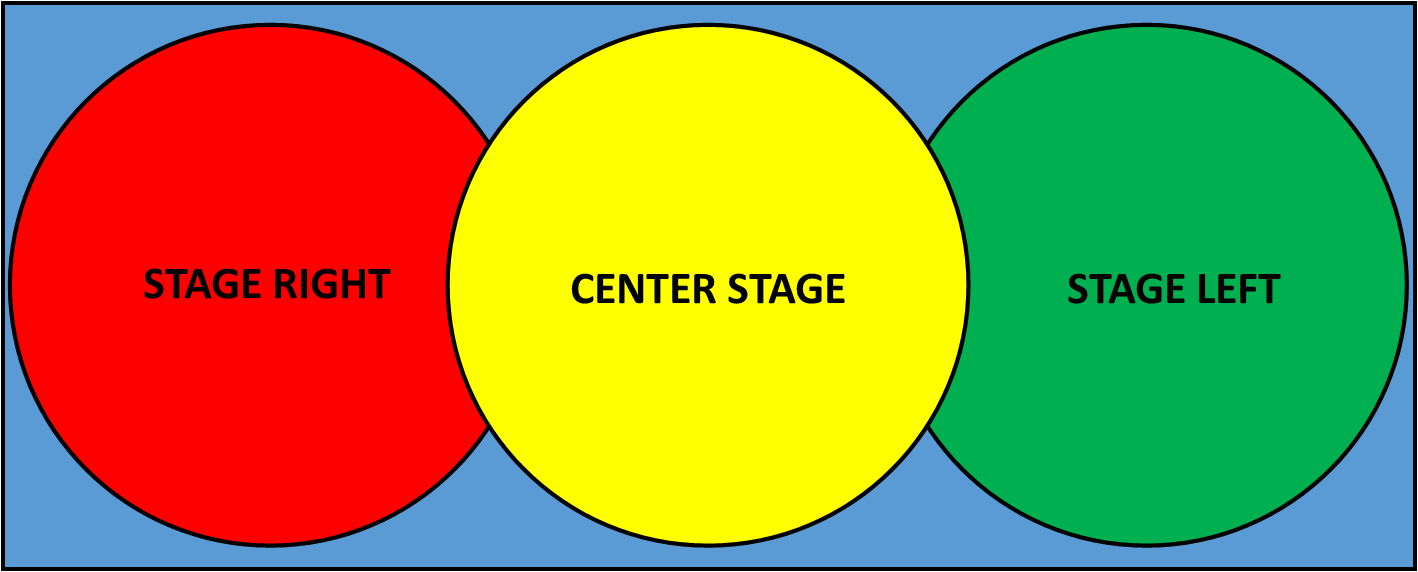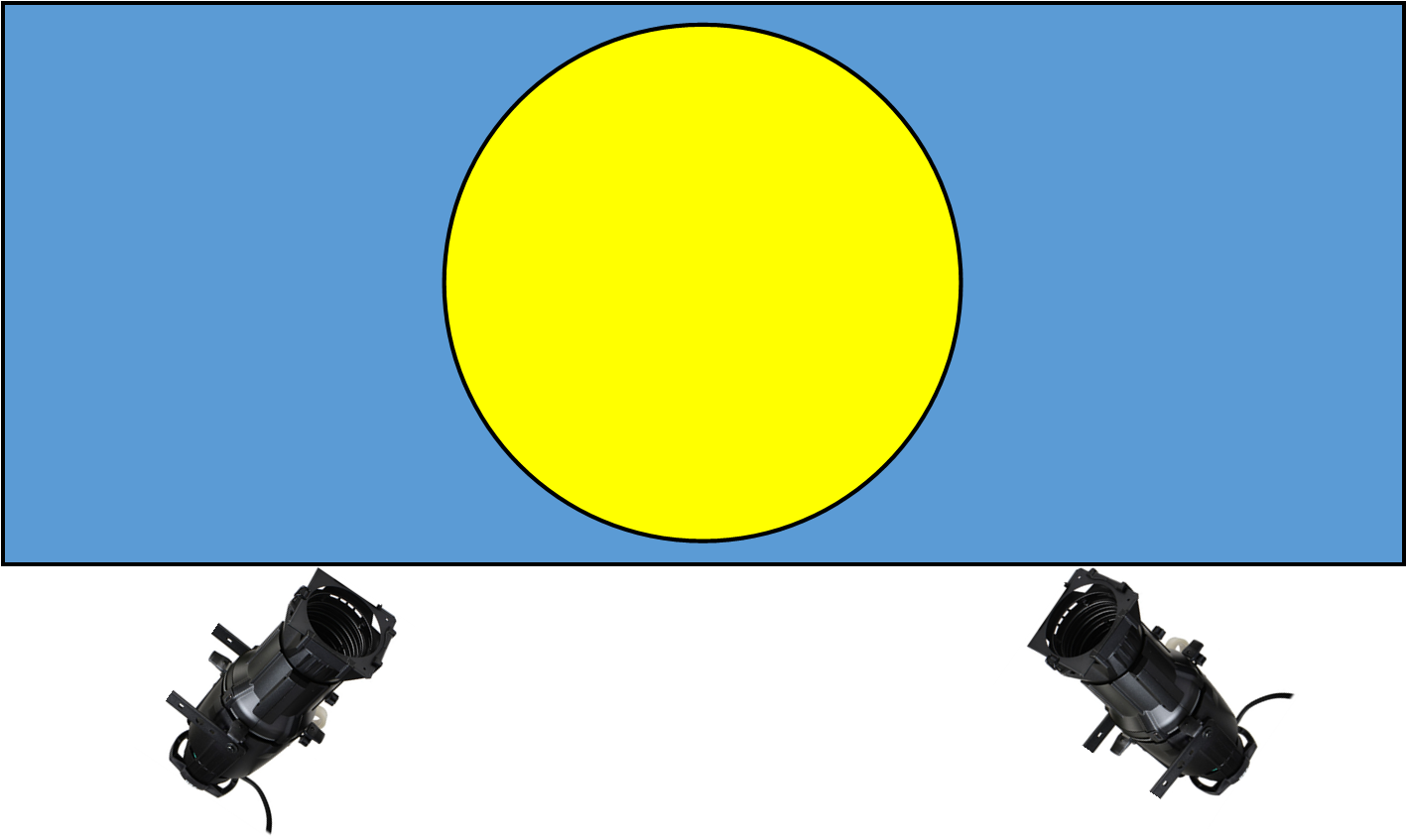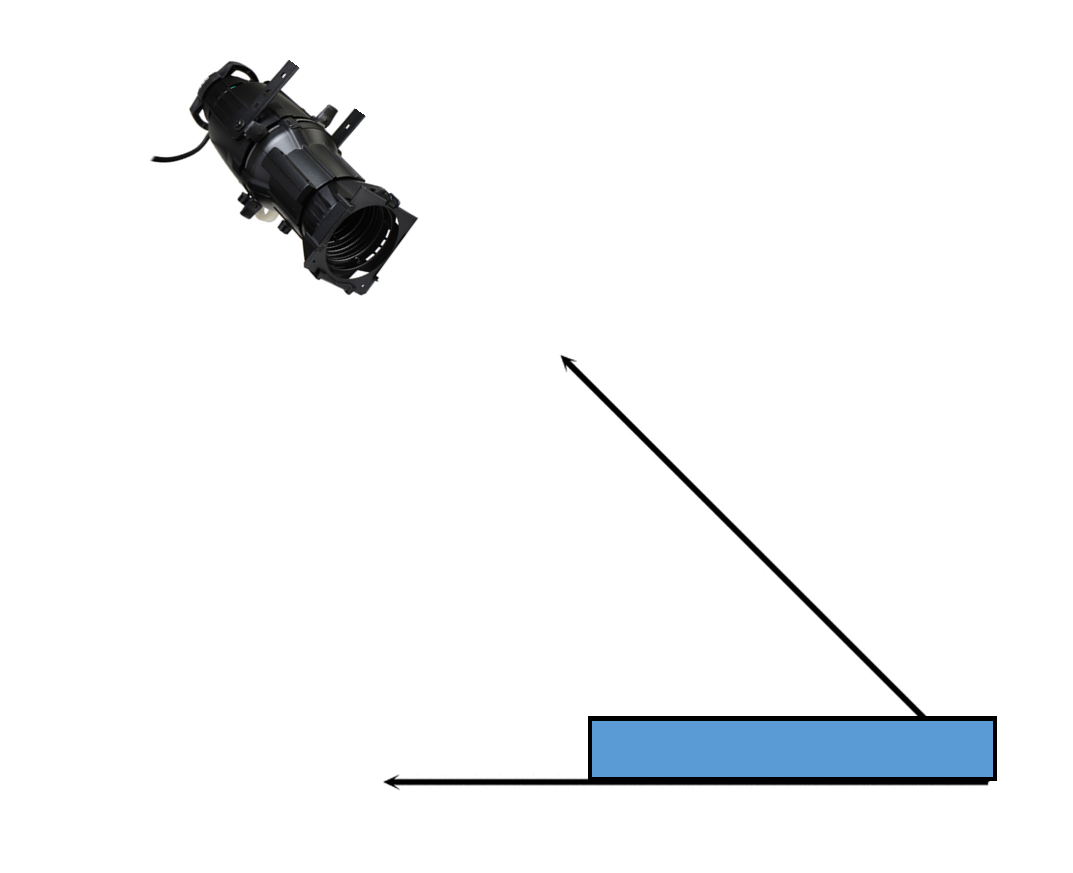Aiming (or “focusing”) your lights on your stage or worship area is like skiing – it’s easy to do at a beginner level, but the advanced levels become much more challenging. But, you think – how hard could it be? You just point a light at a person on the stage, and they’re lit up, right? Right. However, you may notice that pointing the lights directly at the actors causes shadows to be cast on their faces (from their noses!). What can we do to avoid these unsightly shadows?
To answer that question, let’s take a few steps back, and look at our stage layout.
At its most basic form, a stage has three areas that an actor may be standing in: left, right, and center. You will want to have lights pointing at each of these three areas, so that actors in each area can be fully lit.

But wait! We already covered why we don’t want to point a light straight at each area, because a light pointing straight at an actor creates an un-flattering look. This is where the “rule of 45 degrees” comes to the rescue.
If you are directly above the stage looking down, you will want to have a light pointing at the area, 45 degrees off of the center axis, in each direction. This helps to ensure that both sides of the actor’s face are lit evenly, and you don’t have shadows on one side or the other.

How high should we hang these lights? If you are looking at the stage directly from the side, you will want your lights to be hung 45 degrees above the stage. This helps to avoid any shadows from a light pointing from too low of a height.

By using the 45-degree rule, you can avoid shadows, because the light is coming in to the cheek area of the face of the performers, and avoiding the nose and other areas that can create shadows on the face.
We hope that knowing how to focus your lights properly will help to make your performance even better!

